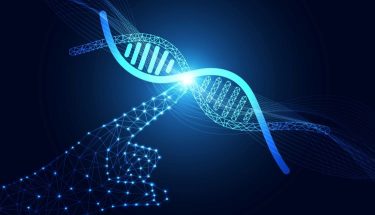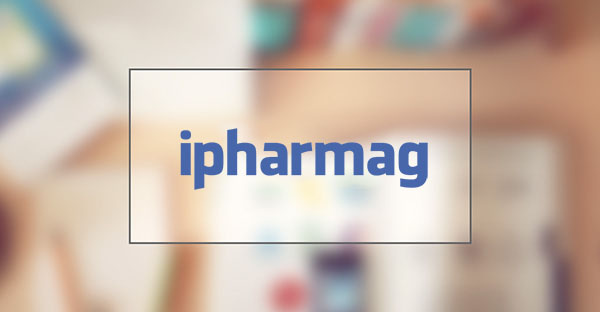
Over the past decade, we have witnessed the arrival of a new era in biopharmaceutical R&D. Traditional methods and processes, such as wet labs, are being augmented by a rapidly expanding digital ecosystem in pharma. Across the industry, this shift is offering extraordinary opportunities to increase the speed, accuracy, and reproducibility of research. Tools like artificial intelligence (AI), machine learning, and computational modelling are already helping us generate insights and predictions that would be difficult, if not impossible, to arrive at using solely conventional methods. In pharma drug development alone, AI is being used to analyse vast datasets and predict outcomes with greater speed and precision than traditional approaches – an advance that has been described as having the potential to outperform conventional methods in both accuracy and efficiency.¹
These capabilities are transforming how we define success in early research, but they also force us to rethink how we train people, structure teams, and make critical decisions. We are no longer simply evolving processes. We are reshaping how scientific discovery happens.
The rise of virtual-first science
In pharma drug development alone, AI is being used to analyse vast datasets and predict outcomes with greater speed and precision than traditional approaches”
One of the most promising developments is the emergence of virtual-first experimentation. Computational techniques now enable us to simulate complex biological systems and forecast outcomes with unprecedented speed. Narrowing down experimental pathways virtually, before ever stepping into the lab, can expedite the research process.
Digital twins have already shown measurable impact in reducing time-to-insight and improving the efficiency of our decision-making, by allowing teams to simulate various development scenarios, anticipate resource bottlenecks, and make proactive adjustments before issues arise – ultimately leading to better planning, faster execution, and more informed prioritisation.²
But the real value comes when we can integrate these models with the deep biological expertise of our scientists. That is where the future lies: not in replacing traditional science, but in amplifying it.
Navigating the human challenge – integrating digital in pharma
Today’s scientists need fluency in data science, systems biology, and even basic computational modelling3“
While the technology is advancing rapidly, the real challenge isn’t digital; it’s human. Integrating virtual tools into research means we must evolve how we hire, train and collaborate.
A workforce skilled only in bench science is no longer sufficient. Today’s scientists need fluency in data science, systems biology, and even basic computational modelling.³
Conversely, data scientists entering the pharmaceutical space must learn to navigate the inherent variability and unpredictability of living systems.
Across the industry, this presents several specific hurdles:
• Skills gap: There is a shortage of professionals who are truly bilingual in both biology and data science. The pace of digital innovation is outstripping the speed at which training programmes can adapt.
• Cultural resistance: Scientists who have spent decades working in traditional lab settings may be sceptical of digital tools or hesitant to rely on computational predictions over physical experiments.
• Siloed expertise: Many organisations are still structured around traditional scientific disciplines, which can limit collaboration and slow down cross-functional learning.
• Legacy training models: Academic programmes often lag behind industry needs, producing graduates who are technically strong but not prepared for today’s hybrid R&D environments.
We have found that the most powerful innovations come from the intersection of expertise.⁴ In pharma R&D, this could look like a computational biologist collaborating closely with an experimental immunologist, or when AI modellers engage with clinical scientists to refine real-world use cases. These are not just nice-to-have collaborations; they are essential to solving the complex, multifactorial challenges we face in modern drug development.
Digital progress – redefining the pharma lab
Future labs will no longer be defined solely by physical infrastructure but by their ability to integrate digital feedback loops into experimental design”
As we adopt these hybrid models, the lab itself is evolving. Future labs will no longer be defined solely by physical infrastructure but by their ability to integrate digital feedback loops into experimental design.
This means shifting our focus from discrete experiments to continuous learning systems, where every data point – whether virtual or real – feeds into a dynamic cycle of hypothesis generation and validation.⁵
It is not about building entirely digital labs but about designing hybrid environments where digital tools are embedded into the fabric of scientific workflow. This transformation is not just operational – it is cultural. Teams need to embrace uncertainty, learn from negative results, and remain open to revisiting assumptions as new data emerges. In the digital age, agility is as important as accuracy.
Breaking down barriers
In the digital age, agility is as important as accuracy”
For many organisations, the biggest barriers to digital transformation are not technological, but institutional. Legacy systems, rigid hierarchies, and outdated key performance indicators (KPIs) often inhibit the pace at which new tools can be implemented or new ways of working embraced.⁶
To truly modernise, we must be willing to let go of practices that no longer serve us. That may mean redesigning processes to support rapid iteration of ideas, experiments, and decision-making; rethinking how we define scientific success; or even restructuring teams to encourage more fluid, multidisciplinary collaboration. We see transformation as a continuous process, not a one-off project.
Preparing for a tipping point in pharma’s digital future
The pharmaceutical industry is approaching a tipping point. The convergence of biology and technology is not a distant possibility – it’s already here. But to harness its full potential, we must act deliberately and decisively.
It is tempting to view digital transformation as a matter of tool adoption. But the deeper truth is this: the future of pharmaceutical R&D depends on how well we cultivate hybrid thinking. It is about building an ecosystem where physical and virtual experiments inform each other, where talent flows freely across disciplines, and where innovation is grounded not only in data but in deep biological understanding.
This is not an overnight change. But with the right mindset, and a willingness to challenge established norms, we can create a more adaptive, responsive, and ultimately more integrated approach to scientific discovery.
About the author
 Alistair Henry is Chief Scientific Officer at UCB. He leads UCB’s research and early development organisation. Alistair has played a pivotal role in the innovation, advancement, and optimisation of UCB’s biologics platform, contributing extensively to the development and refinement of technologies that facilitate both small and large molecule drug discovery.
Alistair Henry is Chief Scientific Officer at UCB. He leads UCB’s research and early development organisation. Alistair has played a pivotal role in the innovation, advancement, and optimisation of UCB’s biologics platform, contributing extensively to the development and refinement of technologies that facilitate both small and large molecule drug discovery.
References
1. Mak KK, Pichika MR. Artificial Intelligence In Drug Development: Present Status And Future Prospects. Clin Transl Sci. 2019;12(3):232–243.
2. Digital Twins In Pharma Project Management: Simulating Success [Internet] Allex.ai Blog; 2023 [cited 2025Apr]. Available from: https://www.allex.ai/blog/digital-twins-in-pharma-project-management-simulating-success
3. Berger B, Tian D, Li WV, El-Kebir M, et al. What Are The Keys To Succeeding As A Computational Biologist In Today’s Research Climate? Cell Syst. 2022;13(10):781–785.
4. The Digitalisaton Of Science, Technology And Innovation: Key Developments And Policies [Internet] Organisation for Economic Co-operation and Development (OECD). Paris: OECD Publishing; 2020. [cited 2025Apr]. Available from: https://www.oecd.org/content/dam/oecd/en/publications/reports/2020/02/the-digitalisation-of-science-technology-and-innovation_fe2855a5/b9e4a2c0-en.pdf
5. Baker L. Introducing the Lab of the Future [Internet] Technology Networks. 2022. [cited 2025Apr]. Available from: https://www.technologynetworks.com/informatics/articles/introducing-the-lab-of-the-future-356898
6. The Challenges With Digital Transformation In Pharma Manufacturing [Internet] Centre for Process Innovation (CPI) Blog; 2025.[cited 2025Apr]. Available from: https://www.uk-cpi.com/blog/the-challenges-with-digital-transformation-in-pharma-manufacturing
The post From pipettes to processors: how AI Is reshaping pharma’s future appeared first on European Pharmaceutical Review.

